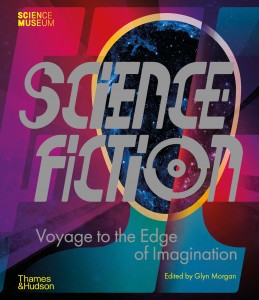What is Science Fiction for? | Nalo Hopkinson

What do we think about when we think about Science Fiction? What is it for? Here, in an excerpt from Science Fiction: Voyage to the Edge of Imagination, author Nalo Hopkinson explores…
What is science fiction for? As an author of the genre myself, I am often faced with assumptions made by people who aren’t interested in whether this question has an answer, or an easy answer, or that the answer is somehow different than that to the question, ‘What is fiction for?’
Perhaps some are thrown by the word ‘science’ in the moniker. Science is, after all, serious business. Science fiction, therefore, must be utilitarian and dry, with a barely concealed didactic aim. It must be there to teach us something. Sometimes one does learn something by reading science fiction. Its authors do a lot of secondary research into science, history, art, language, social customs and so on. We also do a lot of extrapolation. This may be why there are those who assume that the aim of science fiction is to divine what the future holds.
The Akan people in the Ghana region of West Africa have the concept of sankofa, pictured (below) as a bird looking over its back to collect the egg that it is behind it. ‘Sankofa’ may be interpreted as ‘go back and get it’; in other words, bring your past along with you as you move forward into the future. As the musician and songwriter Bob Marley said, ‘Don’t forget your history/Know your destiny’.

Many cultures use stories to talk about the responsibility to look after this planet that nourishes us and, hopefully, future generations. The Taíno people, indigenous to the Caribbean, have an ancient myth that says that they used to live on the Moon, which they perceived as a sphere of bright rock like the others they could see floating in space. Then they looked down at the Earth. It should have been similarly shining, but instead was dull and dingy. The Taíno, chagrined at their neglect of their neighbourhood, flew to Earth in boats made of clouds and proceeded to clean up the polluted land and waters. In their haste, they forgot to anchor their boats, which floated away into the sky. The stranded Taíno had to learn how to make new lives for themselves on Earth.
It is a centuries-old story of the environment and human responsibility that sits in conversation with director Sung-hee Jo’s film Space Sweepers (승리호, 2021), in which crews of space garbage pickers eke out a living by salvaging the debris that human beings leave floating in the solar system. These concerns also show up in Tochi Onyebuchi’s novel Goliath (2022), in which the world is suffering widespread plague and environmental collapse. A privileged and largely white few have left Earth for a space colony, abandoning populations of predominantly people of colour to survive as best they can on a poisoned planet.
In 1945, the first successful explosion of an atomic bomb created trinitite, a radioactive mineral that had never before existed on Earth. Ellen Klages’s novel The Green Glass Sea (2006) examines the event through the eyes of two young girls who live on the secret New Mexico atomic bomb-development site for the Manhattan Project. Their fathers are scientists involved in creating the bombs dropped on the Japanese cities of Hiroshima and Nagasaki. These events not only destroyed over 200,000 lives; they were a horror that changed the world forever.

Humans continually alter the world, creating everything from new codes of law to new plastics. Rarely do we fully anticipate the consequences. Science fiction is the literature of social and technological change. Foremost an art form, its intent is usually more exploratory than prophetic. Similarly, the sankofa bird doesn’t predict the future. It implies that we need to take the long view of our actions. Science fiction storytellers ruminate on what humanity is capable of, for good or ill.
This text was excerpted from the exhibition catalogue for the Science Museum’s Science Fiction: Voyage to the Edge of Imagination, published by Thames & Hudson
Images, from top: © INSPIRED MINORITY PICTURES / Album In Pumzi (2009), a short film written and directed by Wanuri Kahiu, climate change-driven drought has caused a devastating Third World War over water; Gold-weight from Ghana in the form of a Sankofa bird © The British Museum; Science Fiction: Voyage to the Edge of Imagination © Thames & Hudson





